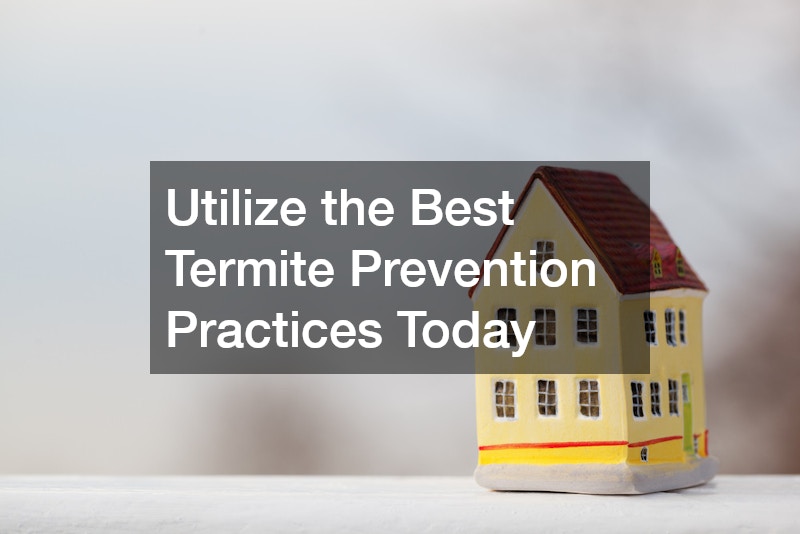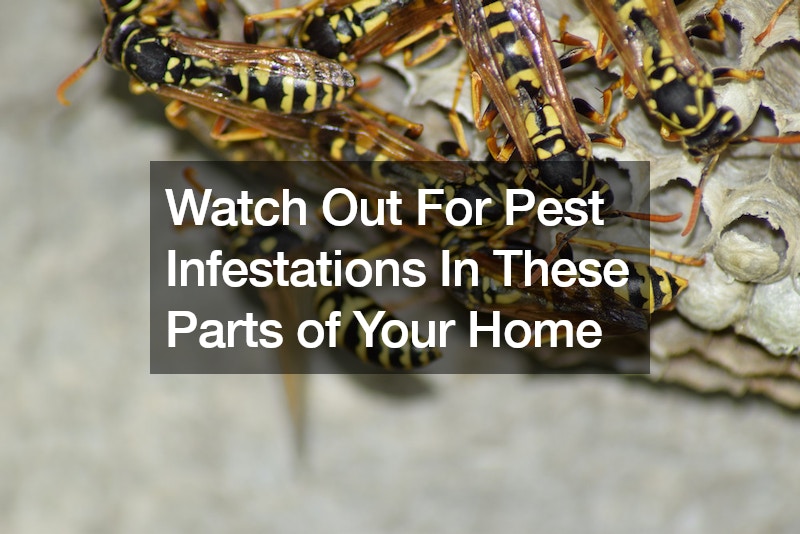Termites are often referred to as “silent destroyers” because of their ability to cause extensive structural damage to homes before homeowners even realize they have a problem. This is why termite prevention is absolutely essential for anyone who owns a home or building. Without proper termite prevention, infestations can quickly spiral out of control, compromising the safety, stability, and longevity of a property. Left unchecked, termites can damage everything from wooden beams and flooring to drywall and insulation, leading to costly repairs and significant disruptions to daily life.
The danger with termites is that they are often hidden from sight, working behind walls and under the foundation, feeding on wood and other cellulose-based materials. This makes early detection and prevention even more important. A termite infestation can start small, but over time, it can cause extensive and expensive damage. Homeowners who invest in proactive termite prevention strategies can save thousands of dollars in potential repair costs, not to mention the inconvenience and stress that comes with dealing with an infestation. More importantly, taking the right steps to prevent termites helps maintain the structural integrity of the home, ensuring that it remains safe and stable for years to come.
One of the best ways to protect a home from termites is by implementing effective prevention methods. This article will delve into the most effective termite prevention strategies, including how to identify an infestation early before it becomes a major issue. We will cover both DIY strategies that homeowners can use to protect their properties as well as the latest innovations in termite control that are available through professional services. Whether it’s through physical barriers, chemical treatments, or the use of technology, understanding the various prevention methods available is key to keeping termites at bay.
In addition to the core prevention methods, we will also explore how a variety of other home services play an integral role in maintaining a termite-free home. For instance, pest control services can help with routine inspections and treatments, ensuring that termites are caught early or kept away entirely. Home painters can be involved in sealing cracks in the home’s exterior, preventing termites from accessing the structure. Home siding company professionals can recommend and install termite-resistant siding, further enhancing the protection of the home.
Furthermore, remodeling contractors can help select termite-resistant materials during renovation projects, making sure that any new additions to the home are also protected. Cleaning service providers can help maintain a clutter-free home, ensuring that there are no wood piles or debris that could attract termites. Home inspections play a vital role in identifying hidden termite damage, and kitchen cabinets specialists can ensure that the materials used in cabinetry are resistant to termite damage.
Other services, such as tree services, can assist in removing overhanging branches or clearing away any tree stumps that could provide easy access for termites to enter the home. HVAC inspections are crucial for maintaining proper ventilation and reducing excess moisture in basements or crawl spaces, where termites thrive. Finally, bathroom contractor expertise can be vital in managing moisture levels in bathrooms and ensuring that these areas remain dry and unattractive to termites.
By taking a comprehensive approach and leveraging the expertise of various professionals, homeowners can effectively protect their homes from termites. This article will break down all the necessary steps, from simple DIY techniques to the latest in professional termite prevention, to help ensure that your home stays safe, secure, and termite-free for many years to come.

What Are the Best Termite Prevention Strategies?
Understanding Termite Behavior
To effectively prevent termites, it is crucial to understand their behavior. Termites thrive in moist environments and feed on wood, making homes with high humidity and exposed wood particularly vulnerable. They often go undetected, causing severe damage before a homeowner realizes there is a problem. Professional pest control services can educate homeowners about termite behavior and provide valuable insight into how to reduce their risk of infestation. Understanding where termites are most likely to establish colonies, such as in basements, crawl spaces, or areas with poor ventilation, can help homeowners better protect their property.
Importance of Regular Inspections
Regular home inspections help detect termite activity before it becomes severe. Scheduling routine inspections with pest control services ensures early intervention, minimizing potential damage. Home inspections should be conducted at least once a year, with additional inspections following significant weather events that may create favorable conditions for termite activity. For example, heavy rain can increase moisture levels, making the environment more appealing to termites. Professional inspectors can also check for moisture buildup, cracks in the foundation, and other structural vulnerabilities that termites may exploit. Catching signs of termites early is key to preventing extensive damage and costly repairs.
Barrier Treatments and Their Effectiveness
Physical and chemical barriers are widely used in termite prevention. These treatments create an unbreachable layer between termites and the home’s structure. Homeowners should work with a home siding company or remodeling professionals to ensure barriers are properly installed. Termite-resistant siding, for example, not only enhances the exterior aesthetic of a home but also provides an added layer of protection against infestations. Additionally, chemical treatments like liquid termiticides can be applied to the soil around a home, creating a protective barrier that prevents termites from entering. These measures can be highly effective when combined with routine inspections and proactive maintenance.
Choosing the Right Termite-Resistant Materials
Using termite-resistant materials during construction or remodeling projects can significantly reduce the risk of infestation. These materials include pressure-treated wood, concrete, and metal framing. Kitchen cabinets made from termite-resistant materials, such as laminate or metal, can further protect a home’s interior from damage. Consulting with a remodeling professional when selecting construction materials ensures that homes are built with long-term durability in mind. Additionally, using materials that are less attractive to termites, such as those that are resistant to moisture absorption, can help reduce the likelihood of an infestation.
Professional Pest Control Services
Engaging professional pest control services is one of the most effective ways to prevent and manage termite infestations. Experts use advanced techniques to eliminate and deter termites before they cause substantial damage. In addition to traditional chemical treatments, many pest control services offer eco-friendly solutions that minimize harm to the environment while effectively keeping termites at bay. Regular treatments, combined with a comprehensive termite prevention plan, can help ensure that your home remains protected for years to come. By working with experts, homeowners can have peace of mind knowing that their property is safeguarded against these destructive pests.
How Can I Identify a Termite Infestation Early?
Common Signs of Termite Presence
Signs of termite infestation include hollow-sounding wood, mud tubes on walls, and discarded wings near windows or doors. Regular inspections of these areas help with early detection. Homeowners should also check for sagging floors, peeling paint, and unexplained pinholes in drywall, all of which may indicate termite activity. Additionally, the presence of a faint, musty odor in certain areas of the home can be another subtle sign of termites, as some species produce a distinctive scent when feeding. Identifying these signs early can prevent more significant damage and costly repairs.

Differences Between Termite and Ant Infestations
Termites and ants are often confused due to their similar appearance. Termites have straight antennae, uniform waistlines, and equal-length wings, whereas ants have bent antennae and distinct waists. Pest control services can help differentiate between the two and implement targeted treatments to eliminate infestations effectively. Understanding the behavior of each species is also important: termites tend to feed on wood and stay hidden, while ants are usually more visible and focus on a broader range of food sources. Correctly identifying the pest is crucial for applying the right treatment.
Using Termite Detection Tools
Various detection tools, such as moisture meters and acoustic sensors, help identify termite activity. These tools can supplement professional home inspections for a thorough assessment. Some homeowners also invest in smart termite monitoring devices that provide real-time alerts of potential infestations. These devices use sensors to detect subtle changes in temperature, moisture, and vibrations, offering an added layer of protection. With the help of technology, homeowners can stay proactive in preventing damage and catching termite problems before they become severe.
Monitoring Moisture Levels
Since termites thrive in humid conditions, keeping moisture levels in check is essential. HVAC inspections help maintain optimal humidity levels, reducing the risk of infestation. Proper ventilation in basements, crawl spaces, and attics further prevents the buildup of moisture that attracts termites. Homeowners should also consider using dehumidifiers in damp areas and ensure that gutters and downspouts are directing water away from the foundation to avoid creating an environment conducive to termite activity. Regular checks and maintenance of moisture levels can make a significant difference in preventing infestations.
Understanding Seasonal Termite Activity
Termite activity fluctuates with the seasons. Understanding their active periods allows homeowners to implement timely preventive measures, such as applying treatments before peak infestation times. In warmer climates, termites remain active year-round, requiring continuous monitoring and prevention efforts. In contrast, colder climates may see heightened activity in spring and fall when termites become more active as temperatures rise or fall. Knowing when termites are most likely to swarm or become more active allows for better timing of inspections and preventative treatments, minimizing the risk of significant damage.

What Are the Most Effective DIY Termite Prevention Tips?
Reducing Wood-to-Soil Contact
Keeping wood elements, such as deck posts and siding, away from soil minimizes the chances of termite infestation. Termites are attracted to wood in direct contact with the ground, where moisture is readily available. Working with a home siding company can help ensure proper installation techniques that reduce wood exposure. Additionally, homeowners should consider using concrete or metal supports for decks or wooden structures, as these materials are less attractive to termites and offer a physical barrier to prevent contact with the soil. Keeping a gap between the soil and wood also improves airflow, reducing moisture buildup that could invite termites.
Managing Humidity in and Around the Home
Proper ventilation and dehumidifiers help manage indoor humidity, which is essential in reducing the likelihood of termite infestations. Regular HVAC inspections ensure that air circulation systems function efficiently and maintain optimal humidity levels throughout the house. Additionally, bathroom contractor services can install moisture-resistant materials and proper ventilation systems in bathrooms, reducing excess humidity that could attract termites. In areas prone to high humidity, such as basements or crawl spaces, homeowners can also use moisture barriers on the floor to prevent moisture from seeping into the wood structure. Managing humidity effectively not only helps in termite prevention but also promotes a healthier indoor environment.
Utilizing Natural Barriers
Sand, diatomaceous earth, and specific plant oils serve as natural termite deterrents. These eco-friendly solutions offer additional layers of protection around the home. Diatomaceous earth, for example, is a natural powder that disrupts the exoskeleton of termites, dehydrating and killing them. Plant oils like neem oil can also be used as a natural repellent. These treatments are safe for pets and the environment, making them an appealing choice for many homeowners. Tree services can also help by trimming overhanging branches that may provide termites with access to the structure. Reducing easy access points for termites can significantly reduce the risk of infestation while promoting a healthier outdoor space.
DIY Inspection Techniques
Homeowners can conduct simple inspections by tapping on wood structures and checking for hollow sounds. This is an effective method for identifying termite damage, as infested wood often sounds hollow when tapped. Maintaining an inspection log aids in tracking changes over time and helps detect early signs of infestation. Homeowners should also inspect areas that are typically hidden, such as behind walls or in basements and attics, where termites may be active but out of sight. Regular cleaning service visits can help identify potential problem areas early by removing clutter or debris that might conceal termite activity, ensuring that every nook and cranny is thoroughly inspected.
Maintenance of Home Perimeter
Keeping the home’s perimeter clear of wood debris, excessive mulch, and overgrown vegetation reduces termite attraction. Wood piles and thick mulch can retain moisture and provide a perfect environment for termites to thrive. Cleaning service professionals can assist in maintaining a tidy yard, further decreasing the risk of infestation. Additionally, homeowners should ensure that downspouts direct water away from the foundation and that gutters are free from debris, preventing water from pooling near the house, which can create a favorable environment for termites. Regularly trimming bushes and trees, along with keeping soil levels away from the foundation, is also vital in minimizing potential termite threats.

Final Thoughts
Termite prevention requires a proactive and multi-faceted approach that combines regular inspections, professional pest control services, and strategic home improvements. Taking these steps not only protects the home from potential infestations but also helps to maintain the value and integrity of the property. Homeowners should prioritize regular inspections to detect termite activity early, as catching an infestation at the earliest possible stage is crucial in preventing significant damage. Scheduling professional pest control treatments ensures that termites are proactively managed and eradicated before they have the opportunity to cause destruction.
Additionally, utilizing professional services can significantly reduce the likelihood of termite problems. For example, home painters can seal cracks in the exterior of the home, preventing termites from accessing hidden areas. Tree services can help maintain vegetation by trimming overhanging branches and clearing away debris, which not only makes the home less attractive to termites but also prevents potential access points for these pests. HVAC inspections are another important step in managing the humidity levels inside the home, as excess moisture can attract termites. Ensuring proper airflow and moisture control helps create an environment that is less conducive to termite infestations.
Incorporating termite-resistant materials in remodeling projects is also an effective strategy for long-term protection. For example, choosing termite-resistant wood for cabinetry, flooring, and structural components during renovations can help safeguard the home’s structure. Similarly, selecting moisture-resistant materials for areas like kitchens and bathrooms, where water damage is more likely, further reduces the risk of termite activity. Additionally, using metal or concrete framing in place of wood during construction or remodeling can add another level of protection, making it difficult for termites to penetrate the home’s defenses.
Homeowners can also benefit from staying informed about the latest termite prevention strategies and investing in advanced technologies like smart monitoring systems that provide real-time alerts for potential termite activity. By remaining vigilant and taking preventative measures, homeowners can stay ahead of potential infestations and reduce the need for costly treatments down the road. Beyond the financial savings, these steps contribute to the overall safety and longevity of the home, preserving it as a secure and comfortable place for the family to live.
Ultimately, termite prevention is an ongoing effort that requires consistent attention and action. By combining the expertise of professionals, regular maintenance, and smart construction choices, homeowners can effectively protect their investment and ensure that their homes remain termite-free for years to come. With proper care and diligence, the threat of termites can be minimized, allowing homeowners to enjoy peace of mind knowing their homes are safe from these destructive pests.



